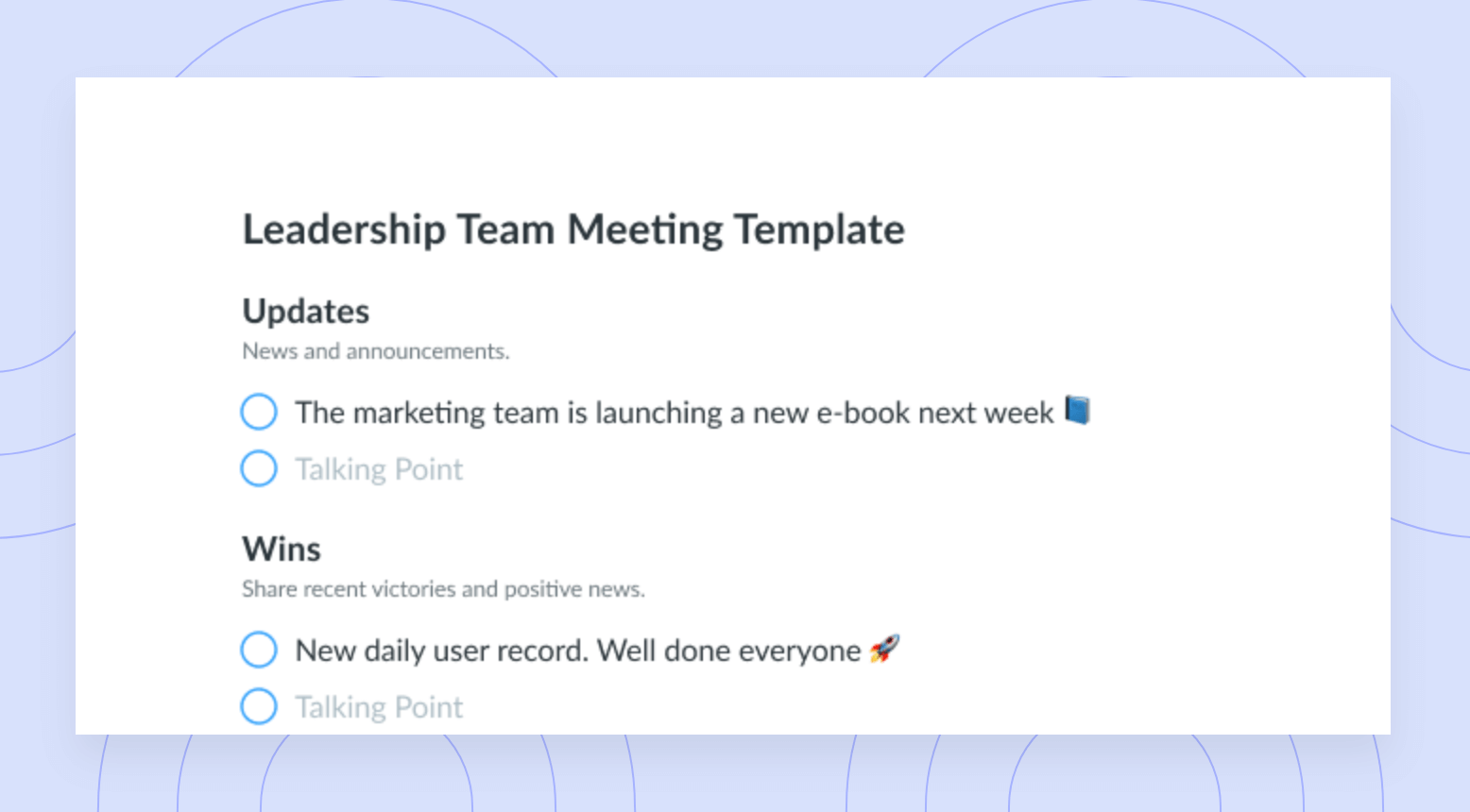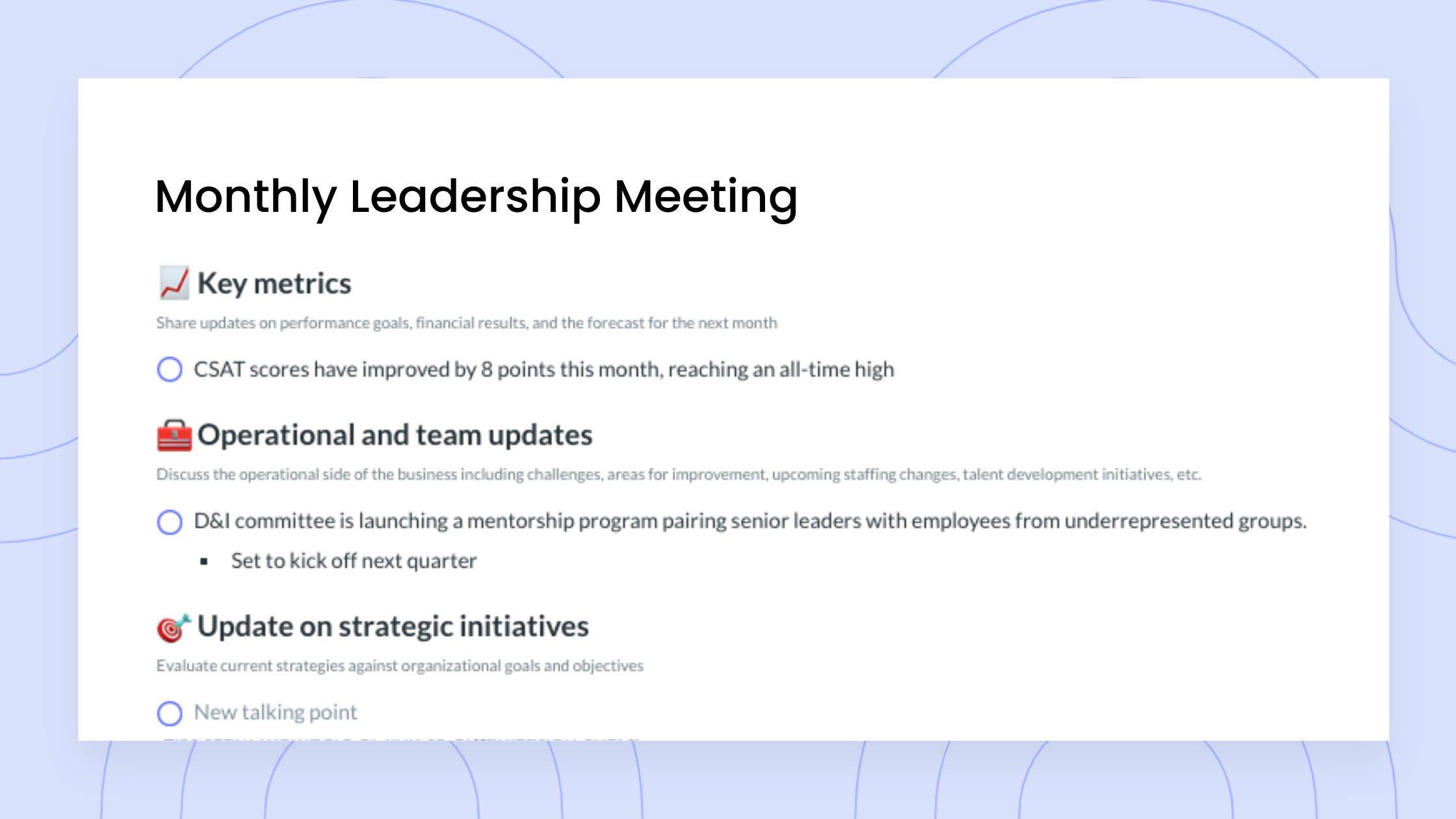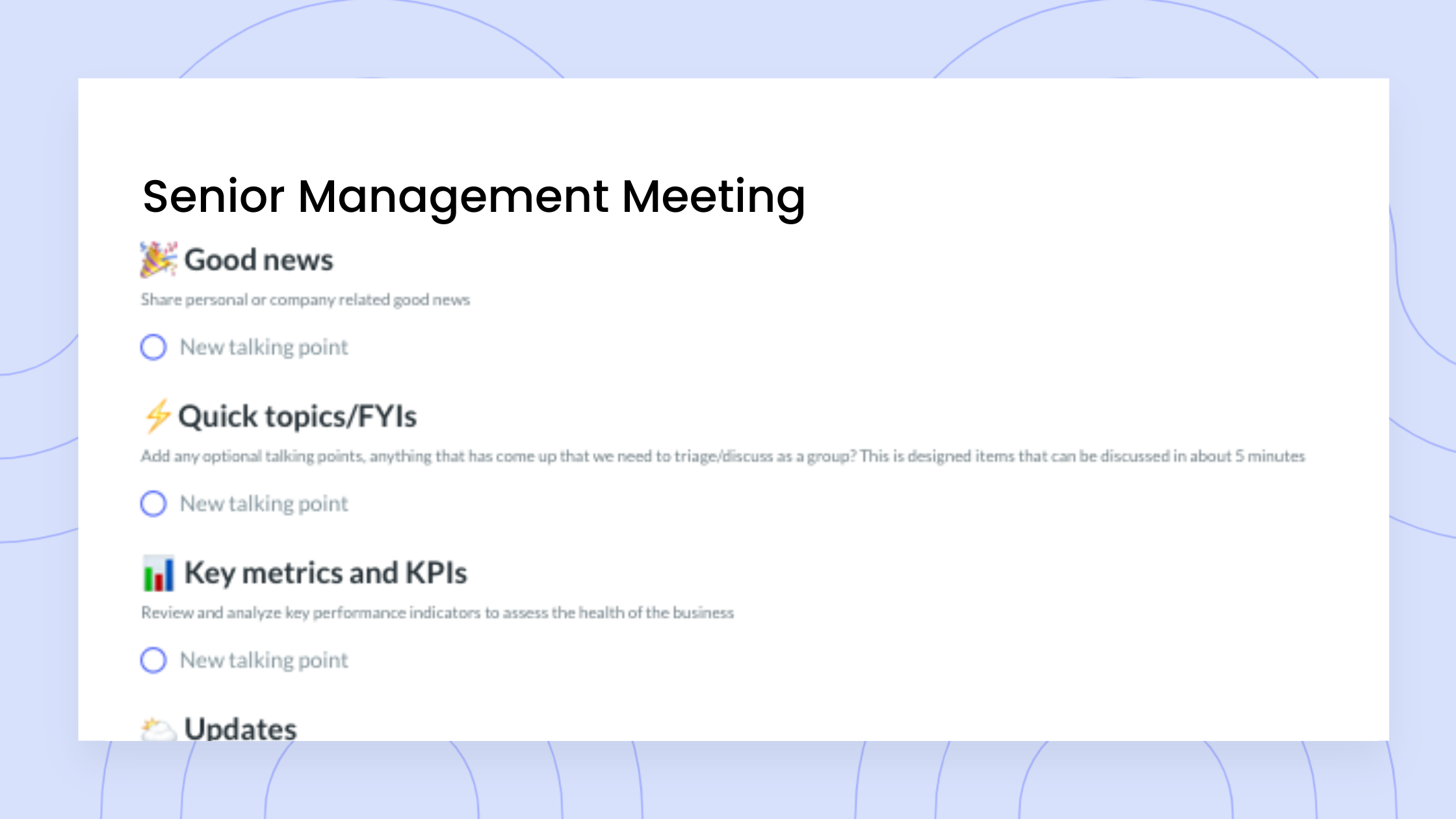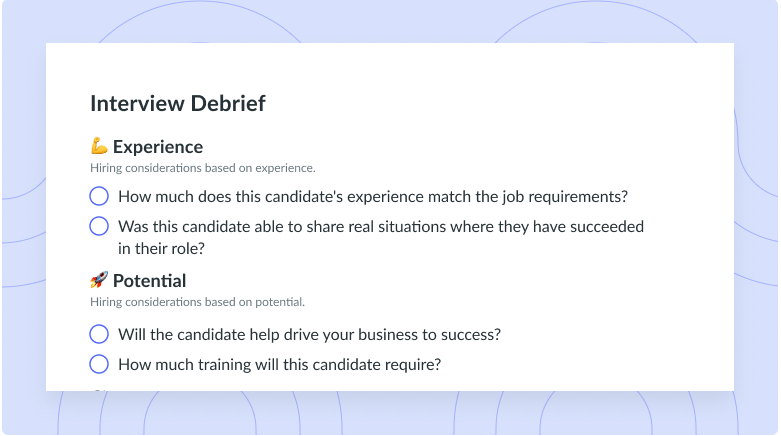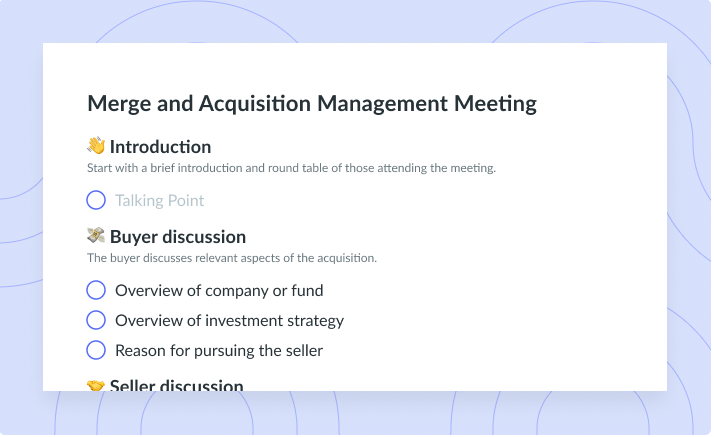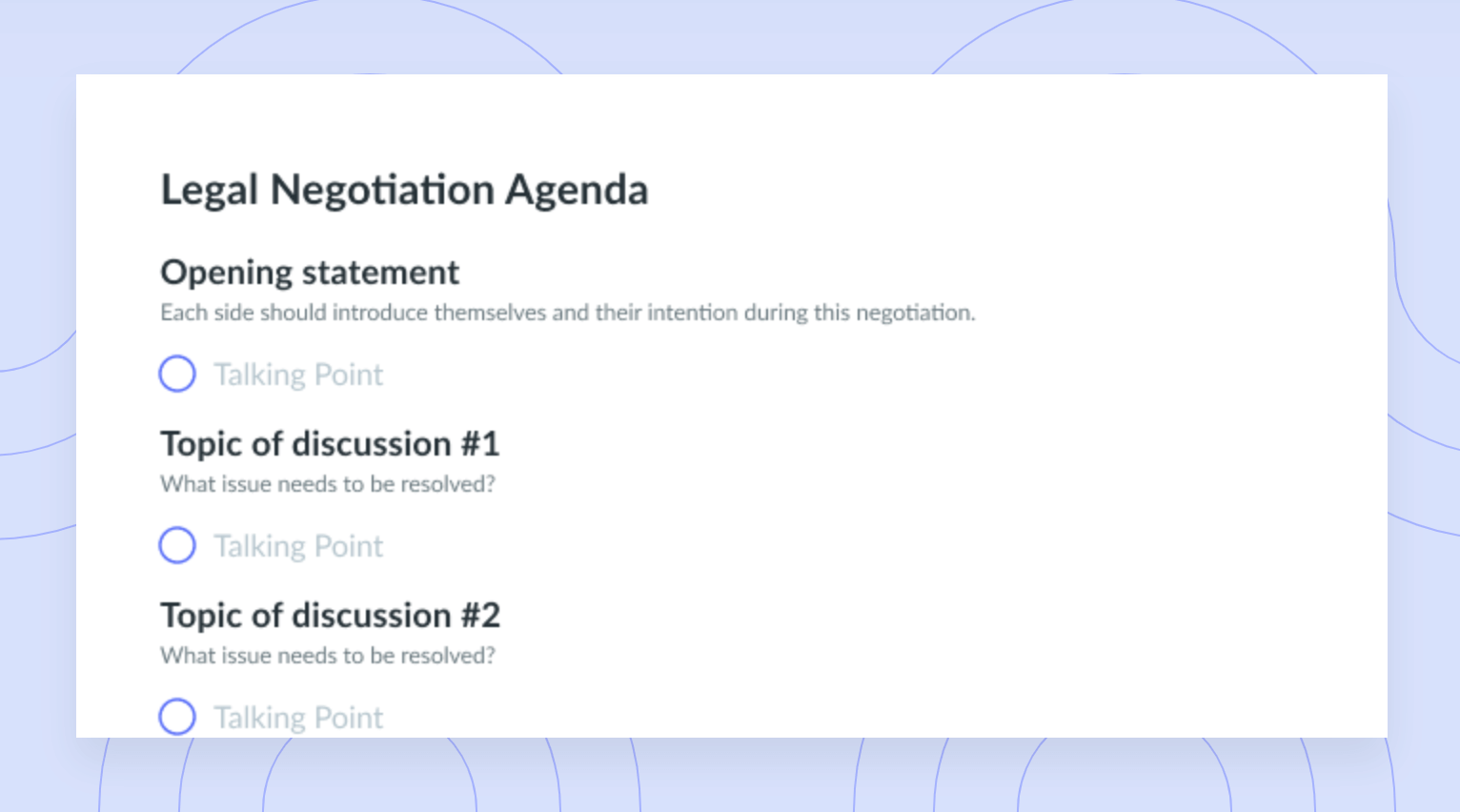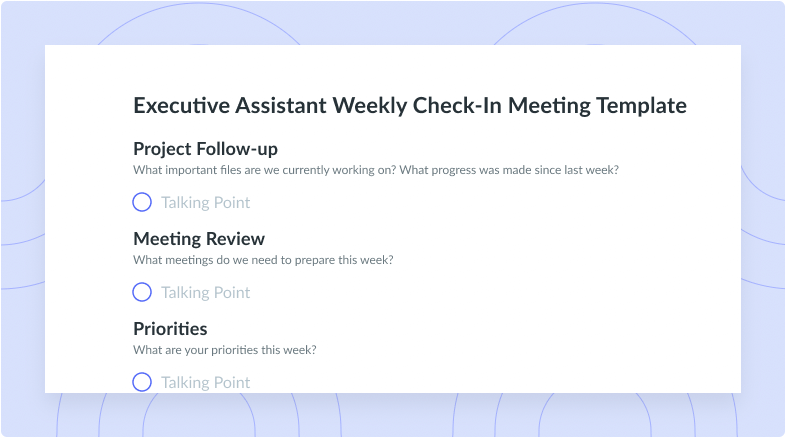
Executive Team Meeting Agenda Template
Get this templateExecutive alignment is essential to making strategic decisions for the company. Use this Executive Team Meeting Agenda to ensure business goals are met!
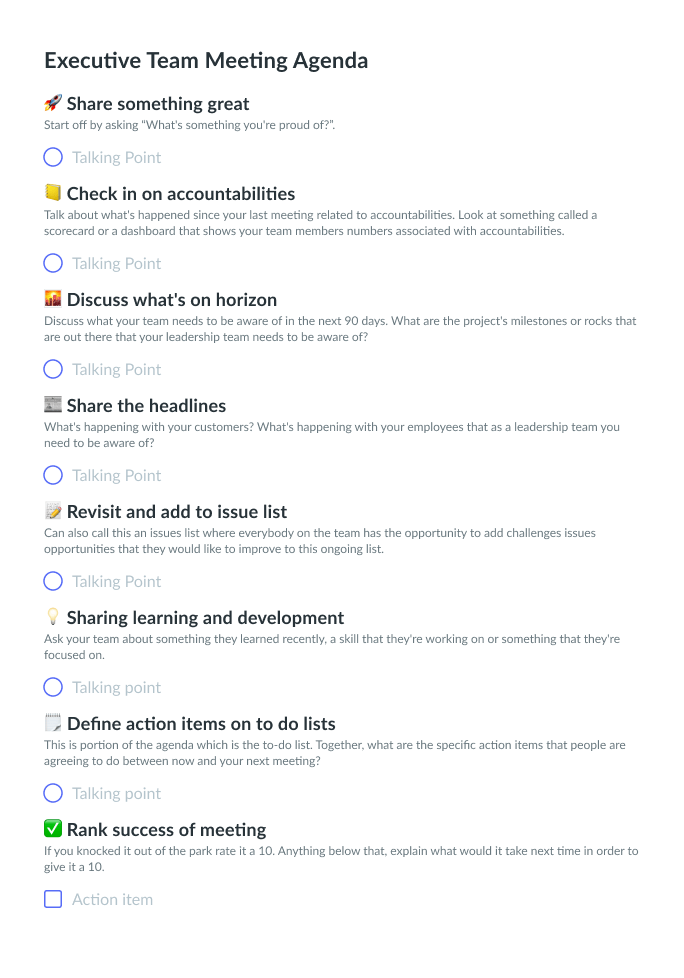

Executive Team Meeting Overview
Executive team meetings are an essential part of running a successful company. Taking place at regular intervals, often weekly or biweekly, executive team meetings are an opportunity to bring the heads of your business together to review performance, raise and resolve issues, discuss new organizational plans, and ensure unity across each department.
Executive teams provide strategic and organizational leadership to a business. They consist of a company’s CEO, top financial officers, and managers from each department.
Executive management teams spend relatively little time together.
“The typical company’s senior executives spend less than three days each month working together as a team—and in that time they devote less than three hours to strategic issues.”
– Harvard Business Review, Stop Wasting Valuable Time.
Given the importance of collective executive decision-making to a company’s success, it’s critical that this time be spent wisely. That’s where an executive team meeting agenda template comes into play.
An executive meeting agenda template is the best way to get the most out of the little time executives spend together.
“The price of misused executive time is high.” – Harvard Business Review, Stop Wasting Valuable Time.
Yet less than 5% of surveyed businesses say their company has a disciplined process for focusing the executive team’s time on critical issues. As a result, these companies don’t reap the full benefits of their management team’s talent.
Using an executive agenda template, leadership teams have more productive and efficient meetings, and ultimately, a better business.
How to Run an Effective Executive Team Meeting
A management team meeting agenda template helps meetings run smoothly by organizing all the key points the executive team should focus on. Additionally, there are several best practices your team should follow during every meeting in order to get the most out of the executive team agenda template.
The first step to running an effective executive team meeting is to send out the executive agenda template in advance. Meeting attendees add more value and focus to the meeting when they know what to expect ahead of time. Sending the agenda in advance also opens the opportunity to add on any missing items.
Another best practice for running an effective executive team meeting is to capture decisions and assign action items. During the meeting, use a document or an app that you can refer back to later. Make sure every decision is clearly recorded in real-time and that actionable items have been assigned to the appropriate team member for completion.
Lastly, you can make sure each executive team meeting is more effective than the last by asking the executive team for feedback about the meeting. Every business is its own unique ecosystem of needs and personalities. Adjusting your executive meetings to reflect the feedback of your team will help create the perfect meeting formula for your business.
What’s inside this Executive Team Meeting Agenda Template:
1 🚀 Share something great
Start every meeting by asking team members to share something they’re proud of. This is a great way to set a positive mood and encourage attendees to engage throughout the meeting. This can also increase office productivity. If everyone knows they’ll be asked to share a positive work result, they’ll work harder to achieve one before every meeting.
2 📒 Check in on accountabilities
Check to see what actionable items from the last executive team meeting have been completed. This keeps the management team accountable for their share of project work. Checking in on accountabilities ensures that project deadlines are met. It also exposes potential project issues that need to be adjusted moving forward.
3 🌇 Discuss what’s on the horizon
Make sure the team is aware of all upcoming project milestones and new business. It’s important for the executive team to be on the same page so that ongoing projects run smoothly. Discussing what’s on the horizon also helps the team adjust their current work pace. If the team expects to receive a larger workload in the future, they can plan their current schedules accordingly.
4📰 Share the headlines
Sharing the headlines is an opportunity to discuss big-ticket items. This helps the management team prioritize the most important action items. It also serves as a big-picture update on the general status of the company. The headlines represent the main strategic, customer, and employee items the leadership team should focus on going forward.
5📝 Revisit and add to issue list
This is an opportunity for team members to add new issues and points of improvement to the company’s issues list. This ensures that underlying challenges don’t go unnoticed and wreak havoc down the line. The health of a company depends on addressing issues promptly when they arise before they become severe and unmanageable.
6💡 Sharing learning and development
This part of the executive meeting agenda template allows each team member to share something they learned or improved on, or a skill they’re developing. This encourages cooperation and team building. Team members will learn something from one another. At the same time, they will be able to share resources and tips to help other team members grow and succeed.
7🗒️ Define action items on to do lists
If a company is like a moving car, this part of the agenda is the fuel that keeps it going. It’s imperative to have clearly defined action items that will be completed between now and the next meeting. This ensures that the team stays productive and continually meets the company’s goals.
8✅ Rank success of meeting
The final part of the executive team meeting agenda template is to have each member rank the meeting’s success. The benefit of this is two-fold. One, it encourages transparency and open dialogue amongst the team, so everyone feels invested. Secondly, the feedback can be used to improve future meetings, so they continue to add value to the company.











